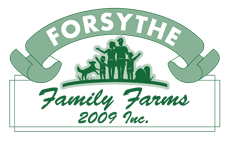For many years families of all ages have been enjoying the early summer tradition of visiting our farm to pick strawberries. Customers have shared memories of picking strawberries as a child at our farm in Unionville and have now returned to our farm here in Greenbank with children of their own. We are proud to be a part of this family tradition and take great pride in our strawberry fields.
Growing strawberries is an time consuming love.
The Plants
Each fall we plow under the fields we have had in strawberry production for 3 years as they are older plants and less productive. In the wintertime we order new strawberry plants to be delivered each spring. These plants(bare rooted, not in pots) are shipped from Nova Scotia in refrigerated trucks. We keep them in our large walk in cooler until the risk of major frost is gone and the fields are worked and ready for planting.
We plant new fields each year so that we have a better probability of an abundant crop of berries. It takes one year after planting for us to start harvesting as we use a matted row system and time is needed for the plants to send off runners filling in the gaps between plants. Each year we will have newly planted fields, one year old, two year old and 3 year old fields of berries.
The fields we plant in are alternated with other crops (crop rotation) to help reduce the cycle of disease, insects and weeds and this helps to rebuild and nourish the soil. This can be done with crop rotation or planting nitrogen rye grass. Keeping the field planted reduces any soil erosion or weeds taking roots.
The Strawberry Fields
Our strawberry fields are tile drained(like you would do around buildings) to improve the water drainage especially during wet seasons but also have irrigation available for dry seasons.
Just like in the name, the fields are covered with straw each winter to help insulate the berries over the winter protecting them from the freeze thaw cycles we have in January/February. April the straw is then raked off the plants to in between the row of berries to help suppress the weeds and stop the soil splashing up onto the berries when it rains.
The First Year Plants
When the strawberry plants flower for the first time, our farm crew removes each blossom by hand. By removing the blossoms, the plant will put its energy into growing strong roots and create runners with baby plants filling in the spaces left between them when planting. Plants need space to get sufficient nutrients and water from the soil. Planting too close compromises their chance to grow strong and healthy.
The first berries that ripen are the biggest and are known as the King berries. These King berries are the first blossoms on the plant so they are the first to ripen. The berries that follow get progressively smaller but their delicious taste is not sacrificed.
Farmer Jim plants three varieties of berries; early, middle and late season berry varieties so that the berry season is extended.
Early Season
The Wendy variety is his choice for our early season berry. He likes the flavour and it grows well on our farm.
Wendy’s are a Canadian variety produced on the East Coast as an early fruit bearing plant.
Mid-Season or the Main Season
Following the early season berries we offer the Mira variety.
The Mira berry again is a Canadian berry offering a lighter coloured fresh flavoured berry.
Our other mid-season berry is the Cavendish, Farmer Jim’s favourite. This variety produces bright red heart shaped berries . These make a great eating berry and jam!
Late Season
The late berries to be picked on the farm are the Valley Sunsets. Again these are a Canadian bred cultivar. These berries are softer making them good for pick your own or farm markets. They do not travel well and are not likely to be found at any of the bigger grocery stores.
